VP, Global Marketing,
Unbound Security
Upcoming Summits
Upcoming Summits
For Executives in the Greater Chicago Area
Tuesday,
August 24, 2021
8:00AM - 6:30PM CDT
Contact Samantha@CyberSummitUSA.com
or call 212.655.4505 ext. 247
If you run into any issues registering, please try using a different browser.
The Sixth Annual Chicago Cyber Security Summit goes virtual as it connects C-Suite & Senior Executives responsible for protecting their companies’ critical infrastructures with innovative solution providers and renowned information security experts. Admission is just $95 giving you access to all Keynote Discussions, Interactive Panels and Product Demonstrations.
With full day attendance, you will earn 8 CPE/CEU Credits!

Insider Threats
Identifying & avoiding breaches and how remote work has impacted Insider Threats in today’s remote workforce age

The Future of Cloud Security
Best practices to mitigate cloud security threats and ways to minimize common misconfiguration errors
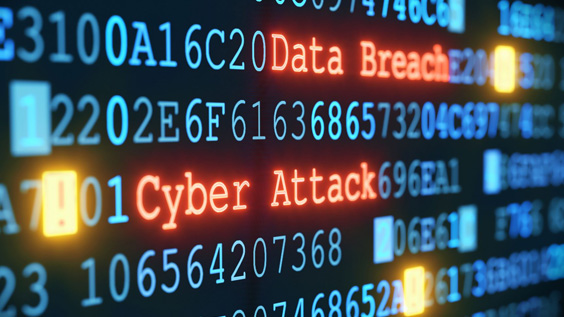
Ransomware on the Rise
Utilizing zero trust to avoid becoming a hostage to cyber criminals and what to do if you fall victim to an attack
Learn
Our conferences have been rated as one of The Top 50 Must Attend Conferences for the last 3 years. Learn from renowned experts from around the globe on how to protect & defend your business from cyber attacks during interactive Panels & Fast Track Discussions.
Evaluate Demonstrations
Evaluate & See demonstrations from dozens of cutting-edge solution providers that can best protect your enterprise from the latest threats.
Comfort & Safety
Many senior executives simply don’t have the time to travel for up to a week to the large cyber trade shows. Our mission is to bring the Cyber Summit experience to the executives from the comfort and safety of your own home. Our events are always for just one day only.
Engage, Network, Socialize & Share
Engage, Network, Socialize & Share with hundreds of fellow Powerful Business Leaders, C-Suite Executives & Entrepreneurs.
CEUs / CPE Credits
By attending a full day at the Cyber Security Summit, you will receive a certificate granting you 8 Continuing Education Units or Continuing Professional Education Credits. To earn these credits you must participate for the entire summit & confirm your attendance at the end of the day.
Investment
By investing one day at the summit, you may save your company millions of dollars, avoid stock devaluation and potential litigation.
Atmosphere
Each Cyber Security Summit is “By Invitation Only” and all attendees are pre-screened & approved in advance. Attendance is limited to approx. 300 Sr. Level Executives to maintain an intimate, non-trade show like environment.
Reality Check
Did Under Armour, Facebook, Equifax, Yahoo, Blue Cross / Blue Shield, Sony, Target and thousands of other businesses that were hacked do everything within their power to avoid being victimized? Is your company next? Learn the latest defensive measures at the Cyber Security Summit from your peers and from thought leaders in the industry.
QUESTIONS
For any questions, please contact Samantha@CyberSummitUSA.com or call 212.655.4505 ext. 225
SPONSOR
To sponsor, speak or exhibit at an upcoming summit, contact BRand@CyberSecuritySummit.com or call 212.655.4505 ext. 223
This educational and informational forum will focus on educating attendees on how to best protect highly vulnerable business applications and critical infrastructure. Attendees will have the opportunity to meet the nation’s leading solution providers and discover the latest products and services for enterprise cyber defense.
8:00-8:30
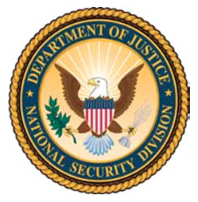
8:30-9:15

Ask five IT/security leaders to define “SASE” and you’ll get five different answers. Simply put, SASE – Secure Access Service Edge – delivers security from the cloud by combining the right mix of capabilities and technologies for your organization’s unique needs. In this session with Dave Grady from Verizon – a global leader in networking and cybersecurity – you’ll learn about:
9:15-9:50

Grant Asplund
Chief Cyber Security Evangelist
Check Point Software Technologies
Security practitioners understand the need to implement new controls that help their organizations defend against the rising number of attacks and Fifth Generation threats like the SolarWinds Orion supply chain hack. But slowed economic growth and the push to secure systems from sophisticated new threats challenge many companies.
These global market conditions underscore the importance of employing a consolidation strategy with a unified security architecture at its center that protects cloud, networks, endpoints, and mobile devices.
Join Grant Asplund, Chief Security Evangelist for Check Point Software Technologies, as he shares the building blocks for putting in place a consolidation strategy that:
• Increases security efficiency with a unified security architecture
• Improves your organization’s overall threat prevention profile
• Eliminates complexity caused by managing disparate systems
• Reduces total cost of ownership
9:50-10:15

Among rapidly evolving technological advancements, the emergence of AI-enhanced malware is making cyber-attacks exponentially more dangerous, and harder to identify. As AI-driven attacks evolve, they will be almost indistinguishable from genuine activity, and conducted at an unprecedented speed and scale. In the face of offensive AI, only defensive AI can fight back, detecting even the most subtle indicators of attack in real time, and respond with surgical actions to neutralize threats – wherever they strike.
In this session, discover:
· How cyber-criminals are leveraging AI tools to create sophisticated cyber weapons
· What an AI-powered spoofing threat may look like, and why humans will not be able to spot them
· Why defensive AI technologies are uniquely positioned to fight back
10:15-10:40

George Avetisov
CEO & Cofounder
HYPR
With the Passwordless Decade well underway, more and more organizations are asking the question: Why is now the right time to move beyond passwords?
George Avetisov, CEO of HYPR, will discuss the rise of organizations moving to the cloud, how the perimeter fades and the attack surface gets larger. Modern tools such as SNIPR and Modlishka make it easier for hackers to launch large-scale automated attacks, bringing credential re-use and two-factor-authentication attacks to record highs.
How did we get here, and will mainstream adoption of passwordless security have an impact? We will explore how the rise of virtual desktop infrastructure and a remote workforce has affected workstation login and review how the evolution of authentication has impacted organizations’ identity and access management systems.
In this session, you’ll learn:
10:40-11:30
Kathleen Moriarty Tony Lee Andy Stone Sam Curry Alex Kirk Ron Ulko Nathan Wenzler
Chief Technology Officer
Center for Internet Security
MODERATOR
Vice President, Global Services Technical Operations
BlackBerry
CTO - Americas
Pure Storage
Chief Security Officer
Cybereason
Global Principal Engineer - Suricata
Corelight
Director
Synack
Chief Security Strategist
Tenable, Inc.
In 2020, there was an unprecedented growth in ransomware attacks and this trend shows no signs of slowing down. Rather, these attacks are evolving and becoming more harmful as cyber criminals become more organized and effective. It is predicted that in 2021, businesses will fall victim to a ransomware attack every 11 seconds with an estimated cost of over $20 billion – 57 times more than in 2015, making ransomware the fastest growing type of cybercrime.
As a result, companies are transitioning from the traditional “trust but verify” method and implementing a Zero Trust model, requiring all users to be authenticated and continually authorized in order to be granted access and maintain access to company data and applications. By leveraging various technologies & techniques such as multifactor authentication, IAM, least privilege access, and microsegmentation, the Zero Trust model reduces the risk of a ransomware attack and minimizes the potential damage from a breach.
This panel will highlight where enterprises are most vulnerable to becoming a victim of ransomware and how utilizing a Zero Trust model minimizes this risk. Industry experts will discuss best practices to avoid a ransomware attack including adapting the Zero Trust model, what to do if your company is being held for ransom, ways to mitigate the damage caused by an attack, and how to recover afterwards.
11:30-11:55

Jeff Costlow
Deputy CISO
ExtraHop
The SolarWinds SUNBURST attack was a rude awakening for many security teams, and it won’t be the last time Security leaders face tough questions about how an adversary evaded defenses and stayed hidden. With threats persisting inside the network for months, security teams need a new plan. In this session, CISO Jeff Costlow discusses strategies, including revising existing mental models and incident response processes, to build resilience in the fight against advanced threats.
11:55-12:20

Ian Pratt
Global Head of Security for Personal Systems
HP Inc.
Users can be induced to click on malicious content through fear, curiosity or trust. The malware they invite onto their devices routinely evades detection by even the most sophisticated security products, making breaches inevitable. It is time for a different approach to endpoint security, applying the sound engineering principles of least privilege and strong isolation enabled by modern CPUs – protection that doesn’t rely on detection.
12:20-12:45
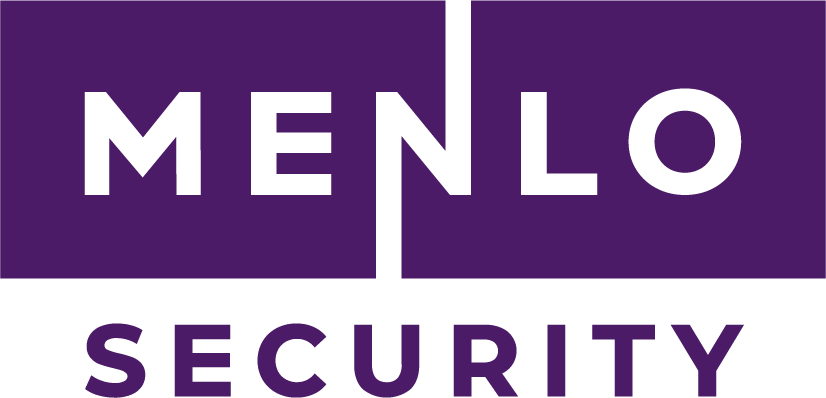
Mark Guntrip
Sr. Director, Cybersecurity Strategy
Menlo Security

12:45-1:10
Track ASam McLane
Chief Technical Services Officer
Arctic Wolf
It is important to recognize that, overall, the industry has an effectiveness problem. The escalation in threat activity and the talents shortage in the industry has created a situation where, despite lots of products and cybersecurity spend, we aren’t getting better protection. To put a finer point on it, there are over 3,000 vendors selling products in the industry. The total spend last year was $120B+ and even with all of that there we almost 4,000 breaches — a 96% increase over the previous year. The key takeaway from these breaches is that they are NOT product failures. They are operational failures. To prevent these kinds of breaches from happening again in the future, we believe, the industry needs to adopt a new approach – an operational approach – to cybersecurity.

12:45-1:10
Track B
1:10-1:35
Track AKevin Sheu
Senior VP of Marketing
Bitglass
Secure access service edge has quickly emerged as a hot topic in cybersecurity, but what exactly does it mean and why should organizations care? As cloud migration, BYOD adoption, and remote work have skyrocketed in prevalence, it has become increasingly apparent that organizations need to think differently about security. While legacy tools like firewalls are no longer equipped to handle the modern IT ecosystem, SASE platforms like Bitglass are built for this exact moment. In this presentation, you will learn:

1:10-1:35
Track BNik Fuller
Offering Analyst
OneTrust Vendorpedia
Vendor risk assessments are essential to truly understand the security, privacy, and compliance programs of the third parties you work with. As a result, nearly every organization endures an endless back-and-forth with third parties. Lengthy questionnaires, broken processes, time-consuming reviews; these challenges are common, and as such, there are concrete steps your organization can take to save time and reduce assessment-related headaches.
In this webinar, we’ll outline the ultimate checklist for better vendor risk assessments, including:
– Actionable takeaways to quickly improve your assessment operations
– Long-term changes you can make to set yourself up for success
– Real advice and lessons learned from leading assessment experts
1:35-2:20
Dr. Christine Izuakor Michael Hansen Peter Scudamore AJ Kuftic Tyler Shields J. Wolfgang Goerlich Tony Goulding
Founder and CEO
Cyber Pop-up
MODERATOR
Sr. Solutions Engineer
Avanan
Principal Engineer – Cloud
Nexum
Principal Technologist
Expedient
Chief Marketing Officer
JupiterOne
Advisory CISO
Duo Security, now part of Cisco
Cybersecurity Evangelist
ThycoticCentrify
Over the past few years, the number of organizations that have adopted cloud-based systems has grown exponentially, largely due to the COVID-19 pandemic. In turn, cloud security has become a critical issue for IT security executives and their teams. McAffee reported an increase of 630% in attacks by external actors targeting cloud services between January and April of 2020. This uptick in cloud security breaches is projected to persist even after the pandemic as many companies continue to utilize the cloud and leverage its benefits.
While migrating to the cloud offers numerous advantages, it also poses certain threats and challenges. In a recent report by Oracle & KPMG, over 90% of IT Professionals felt their organization had a cloud security readiness gap. A significant concern for many who are adapting to a cloud-based workforce is misconfigurations and gaps in cloud security programs. Additionally, cloud-based infrastructure requires adopting new security policies and processes. Many companies believe their existing security teams lack the necessary skillsets and knowledge that the cloud environment requires, especially as organizations turn to multi-cloud, hybrid cloud, and distributed cloud models.
This panel will highlight the areas where cloud systems can leave enterprises vulnerable, ways to minimize common misconfiguration errors, and other best practices to mitigate threats when migrating to the cloud. Our lineup of Industry Experts will provide their expertise on developing a robust cloud security strategy that addresses these issues and insight on how to stay secure in the future of cloud security.
2:20-2:45

Patrick Vowles
North America Product Marketing Manager - Security
IBM Security
Many of today’s organizations have as many staff resources integrating security tools and data sources as they do actually running their security programs. This is a tragic duplication of effort and not the most productive use of precious talent that often fails to create the expected value and ROI. Join us to hear how IBM, and some key alliance partners are pushing the industry towards open, standards-based interoperability, and see some tangible examples of what those gains in efficiency and efficacy look like today.
2:45-3:10

Axel Peters
Executive Sales Manager
baramundi
Cyberattacks have quadrupled since the beginning of the pandemic. Lots of endpoints are currently on their own when it comes to being managed and protected. What will happen when these machines come back to the office, or are they coming back at all? This presentation will address the different scenarios that companies may encounter and how to resolve them by automating their endpoint management.
3:10-3:15
Meet & Engage with fellow Business Leaders, Cyber Experts, Government Officials & Thought Leaders.
By meeting with each Solution Provider, you will be automatically entered to win one of ten $100 Amazon gift cards!
3:15-3:40

Shawn Taylor
Customer Evangelist and Senior Systems Engineer
ForeScout Technologies
The Forrester Wave™: Zero Trust eXtended Ecosystem report in October 2019 called IoT and OT device security, “one of the hardest problems to solve within the enterprise.” Join this webinar to learn how Forescout allows organizations to mitigate risk and embrace Zero Trust architecture for all managed, unmanaged, virtual or physical IP-connected systems across your extended enterprise.
This webinar will discuss how to:
3:40-4:05

JD Sherry
Chief Strategy Officer
Remediant, Inc.
It is shocking that, year over year, stealing credentials is still the top tactic used by attackers to breach organizations. Why is this still happening? Hint: It isn’t only because of weak passwords. Organizations have invested heavily into privileged access management technologies, but these solutions have struggled to address the problem for five key reasons. In this discussion, we will address the gaps in current access management approaches but, more importantly, show you how to quickly close the gaps and significantly reduce security risks without disrupting your current investments or systems.
Join Remediant in this discussion to:
4:05-4:30

4:30-4:55

Paul Martini
CEO, Co-Founder & Chief Architect
iboss
Secured Access Service Edge, or SASE, is no longer a buzzword tossed around by cybersecurity pundits but is a robust, cloud-based service model to enable secure anywhere, anytime access from any device.
In the Are you SASE Ready? 5 Steps for Building Your SASE Roadmap webcast, you will learn how to build a roadmap to move to SASE and the benefits such a move will offer.
The session will cover how SASE will provide your organization with a path to reducing network and security cost and complexity while increasing security and connectivity to give your users a better experience, regardless of location.
In this session, Paul Martini, CEO, CTO & Co-founder at iboss, will discuss:
An understanding of the main drivers that lead organizations to migrate to SASE cloud;
5 steps to help you understand how to future-proof your network security investments;
What to consider when choosing a SASE platform.
4:55-5:40
Sean Atkinson
Chief Information Security Officer
Center for Internet Security
MODERATOR
Ryan Kalember
EVP, Cybersecurity Strategy
Proofpoint Inc.
Ram Vaidyanathan
IT Security & Cyber Risk Expert
ManageEngine
Matt Baxter
Sr. Solutions Architect
Infoblox
Scott Giordano
V.P., Data Protection
Spirion
Deepak Gupta
Lead Software Architect
Cyral
Insider Threat has become increasingly problematic to businesses as the frequency and cost of these threats have risen over the last several years. In a global study conducted by Ponemon Institute in September of 2019, there was a 31% increase in overall cost of Insider Threat and a 47% increase in the total number of Insider Incidents from 2018.
Today, Insider Threat poses an even greater risk to businesses in the wake of the COVID-19 pandemic. Forrester Research, Inc. reported that in 2020, a quarter of all security breaches were caused by an insider and estimates that in 2021, Insider Threats will account for 33% of security breaches.
This panel will discuss the various factors that contribute to this increase in Insider breaches, how remote work has impacted the malicious & non-malicious Insider Threats facing businesses, and the implications this has on enterprises today. Our lineup of Industry Experts will offer their insight & provide best-practices on how businesses and their IT Security Teams should address these risks and adapt in order to defend against Insider Threats.
5:40-6:05

Rob Ellis Scott McCormick Jenny Victor
EVP Sales
Reciprocity
CISO
Reciprocity
VP of Marketing
Reciprocity
Whether a start-up or an enterprise, you are probably working with multiple vendors, using their software and reliant on their systems. Yet while these external vendors provide invaluable services, they also introduce significant risk to your company’s information security.
How do you know if your vendors are meeting required contractual, security and privacy obligations?
If you don’t have processes in place to assess the risks these third parties pose, then your answer is most likely you don’t. And this is critical: You need to know the risks of working with third parties and that you can trust them — because if they go down, your business may, too.
Assessing risk, however, can be incredibly complex. Traditional risk management approaches that rely on manual processes, spreadsheets and even survey methods don’t scale well and are not automated enough. And they certainly can’t support a third-party vendor network once it reaches a certain size: spreadsheets and email folders become overwhelming, ad hoc processes and reporting cycles create confusion, and manual reviews lead to missed issues and trends. In fact, the more successful an organization is – and the more third-party vendors they work with – the more automation and continuous monitoring are required.
At Reciprocity, we work with companies of all sizes to help streamline and improve third-party risk management. Join Reciprocity CISO Scott McCormick and VP Rob Ellis as they walk you through:
6:05-6:35
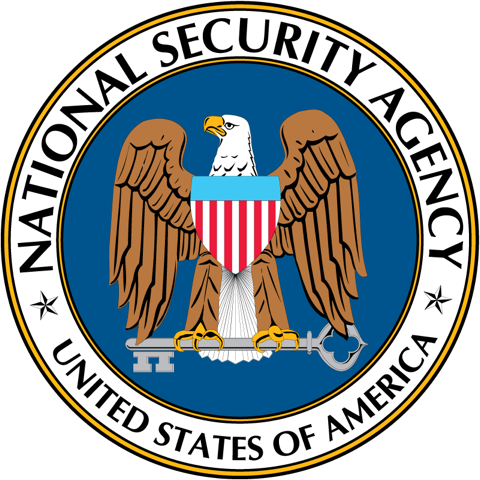
Quinn Carman
Chief
The NSA, Red Team
Prior to defending an organization against a determined attacker, their techniques must be understood. This presentation provides an adversarial viewpoint to inform network defense leaders how the attackers see their organizations and are able to be successful with their objectives, even when well defended. The presenter will draw upon over 17 years of personal experience as a Red Team operator and leader to illustrate how your organizations are viewed, through the eyes of an adversary.
Discuss and share the latest in cyber protection with our renowned security experts during interactive Panels & Round Table discussions. View our Security Content Sharing portal for past Cyber Security Summit solutions to protect your business from cyber attacks.
The Cyber Security Summit connects cutting-edge solution providers with Sr. Executives to analyze & diagnose cybersecurity flaws through interactive panels & roundtable discussions. View the latest presentations given at the Cyber Security Summit through our Security Content Sharing portal.
The Cyber Security Summit is proud to be in partnership with some of the industry’s leading organizations in technology, information security, and business leadership.
If your media outlet or association is interested in becoming a strategic industry partner with The Cyber Security Summit, please contact Megan Hutton at MHutton@CyberSecuritySummit.com or call at 212.655.4505 ext 241.
Find out how you can become a sponsor and grow your business by meeting and spending quality time with key decision makers and dramatically shorten your sales cycle. View Prospectus
| Cookie | Duration | Description |
|---|---|---|
| cookielawinfo-checkbox-analytics | 11 months | This cookie is set by GDPR Cookie Consent plugin. The cookie is used to store the user consent for the cookies in the category "Analytics". |
| cookielawinfo-checkbox-functional | 11 months | The cookie is set by GDPR cookie consent to record the user consent for the cookies in the category "Functional". |
| cookielawinfo-checkbox-necessary | 11 months | This cookie is set by GDPR Cookie Consent plugin. The cookies is used to store the user consent for the cookies in the category "Necessary". |
| cookielawinfo-checkbox-others | 11 months | This cookie is set by GDPR Cookie Consent plugin. The cookie is used to store the user consent for the cookies in the category "Other. |
| cookielawinfo-checkbox-performance | 11 months | This cookie is set by GDPR Cookie Consent plugin. The cookie is used to store the user consent for the cookies in the category "Performance". |
| viewed_cookie_policy | 11 months | The cookie is set by the GDPR Cookie Consent plugin and is used to store whether or not user has consented to the use of cookies. It does not store any personal data. |
